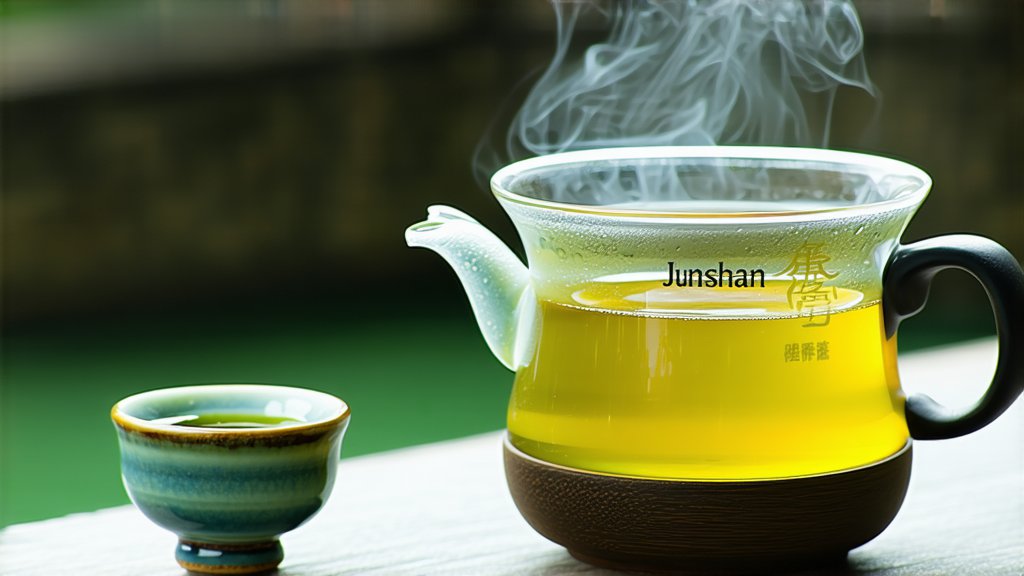
Junshan Yinzhen, often hailed as the "king" of yellow teas, stands as a testament to the intricate artistry and rich heritage embedded within China's ancient tea culture. This exquisite variety, originating from the lush hills of Junshan County in Hunan Province, has captivated tea connoisseurs worldwide with its unique flavor profile, delicate aroma, and golden hue. As we embark on this journey through the world of Junshan Yinzhen, we will delve into its storied history, explore its distinct characteristics, uncover the meticulous craftsmanship behind its production, and provide insights into the art of appreciating this golden delicacy.
A Glimpse into History
The roots of Junshan Yinzhen trace back over a millennium, with its cultivation dating as far back as the Tang Dynasty (618-907 AD). It was during the Ming Dynasty (1368-1644 AD) that Junshan Yinzhen gained significant recognition, becoming a favorite among the imperial court and a symbol of prestige. The tea's name, "Yinzhen," translates to "silver needle," reflecting the slender, needle-like appearance of its downy buds, which are carefully selected and hand-picked before undergoing the distinctive yellow tea processing.
Varieties within a Variety
While Junshan Yinzhen reigns supreme among yellow teas, it is not without its own variations. These differences often stem from slight alterations in the processing methods or the specific terroir where the tea plants are grown. Some notable sub-varieties include:
- Junshan Mi Xiang: Known for its subtle floral fragrance reminiscent of honey or osmanthus, this variant showcases the influence of the local climate and soil conditions on the tea's aroma.
- Junshan Huang Ya: With a more pronounced yellow color and a smoother taste, this type is often favored by those seeking a mellower experience.
- Junshan Tian Jing: This premium grade features exceptionally fine buds and is considered the epitome of quality within Junshan Yinzhen, offering a more concentrated flavor and an even more refined texture.
The Art of Crafting Junshan Yinzhen
The magic of Junshan Yinzhen lies not only in its ingredients but also in the precise and time-honored techniques employed during its production. Here is a closer look at the steps involved:
-
Hand-Picking: Only the youngest, most tender buds are chosen, typically in early spring when they are covered in a fine layer of downy fuzz, known as "hual." This careful selection ensures the highest quality and sweetness.
-
Killing Green: Unlike green tea, which is quickly heated to prevent oxidation, yellow tea undergoes a gentler process. The freshly picked leaves are lightly pan-fried or steamed to slow down enzyme activity partially, allowing a controlled oxidation that gives yellow tea its characteristic color and flavor.
-
Moisturizing: After the initial heating, the leaves are wrapped in cloth or paper to create a humid environment, promoting further oxidation while still preserving their yellowish hue. This step can last anywhere from several hours to a couple of days, depending on the desired outcome.
-
Fixing and Drying: Finally, the tea is subjected to a final round of fixing to halt any residual enzymatic activity and then slowly dried under low heat to achieve the perfect balance of moisture content and flavor concentration.
Savoring the Golden Elixir
To truly appreciate Junshan Yinzhen, one must adopt a mindful approach to tea tasting. Here are some guidelines for an authentic experience:
-
Preparation: Use water just off the boil (around 80-85°C or 176-185°F) to avoid scalding the delicate leaves. A glass vessel is preferred as it allows for visual appreciation of the tea's unfurling dance.
-
Infusion: Add approximately 3 grams of Junshan Yinzhen per 150ml of hot water. Let the first infusion steep for about 2-3 minutes, gradually increasing the steeping time for subsequent infusions to fully extract the flavors.
-
Observation: Admire the pale yellow liquor, a hallmark of Junshan Yinzhen, which should be clear and bright with a slight viscosity.
-
Aroma: Inhale deeply to detect the subtle notes of orchid, melon, or chestnut that may emerge from a high-quality Junshan Yinzhen.
-
Tasting: Sip slowly, allowing the tea to coat your palate. Notice the smooth, almost creamy texture and the sweet aftertaste that lingers. The flavor profile should be balanced, with a harmonious blend of sweetness, umami, and a hint of vegetal freshness.
-
Multiple Infusions: Junshan Yinzhen is renowned for its ability to withstand multiple infusions, each revealing new facets of its complexity. Experiment with varying steep times to explore the full spectrum of flavors.
Conclusion
Junshan Yinzhen encapsulates the essence of China's tea legacy, offering a window into the country's profound relationship with this ancient beverage. Its history, varieties, intricate production process, and nuanced tasting ritual all contribute to its status as a cherished treasure among tea enthusiasts. Whether you're a seasoned tea drinker or a curious newcomer, exploring Junshan Yinzhen promises a journey of discovery, inviting you to savor not just a cup of tea but a piece of living history.
Keywords: Junshan Yinzhen, Yellow Tea, Tea Culture, China, Tea Processing